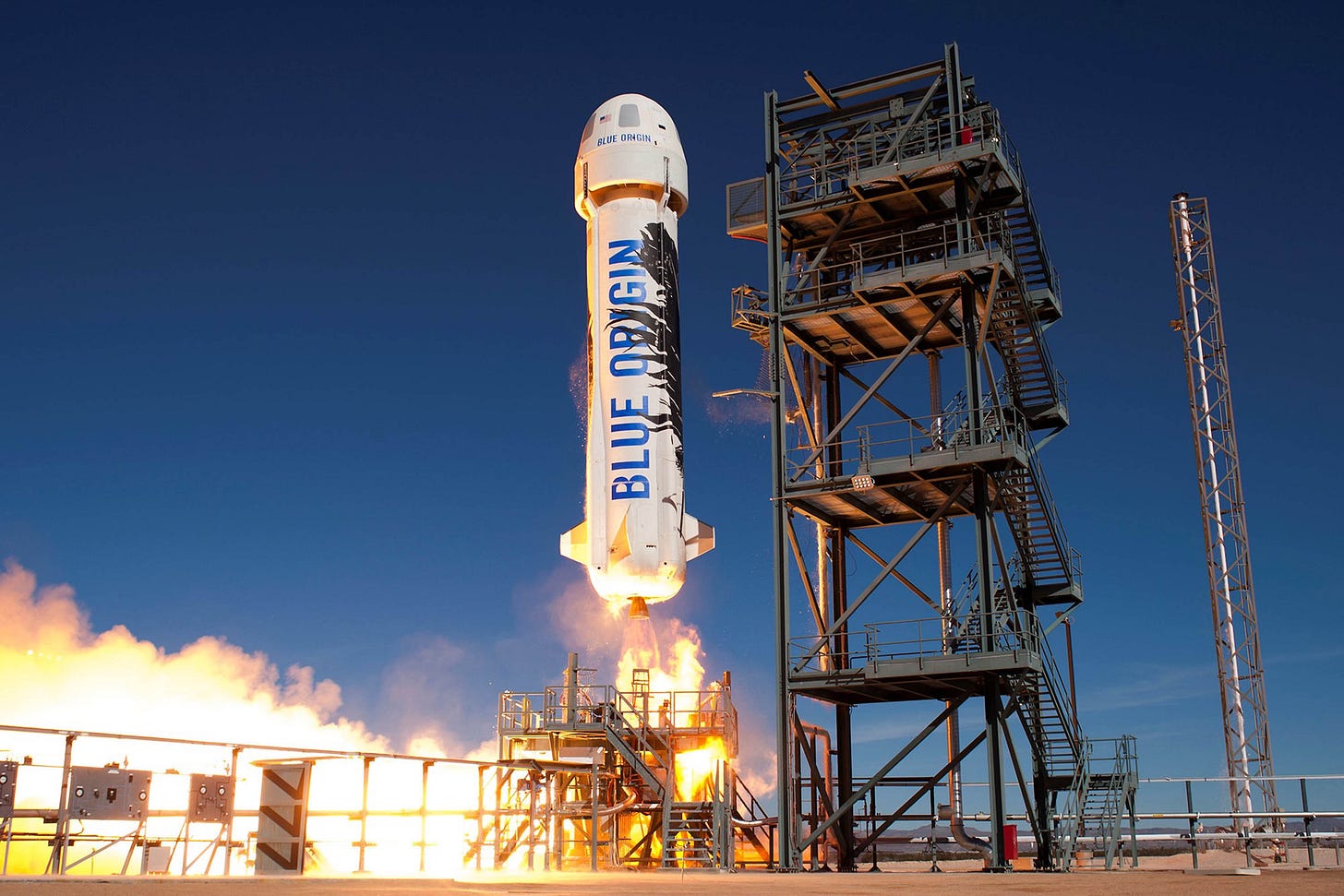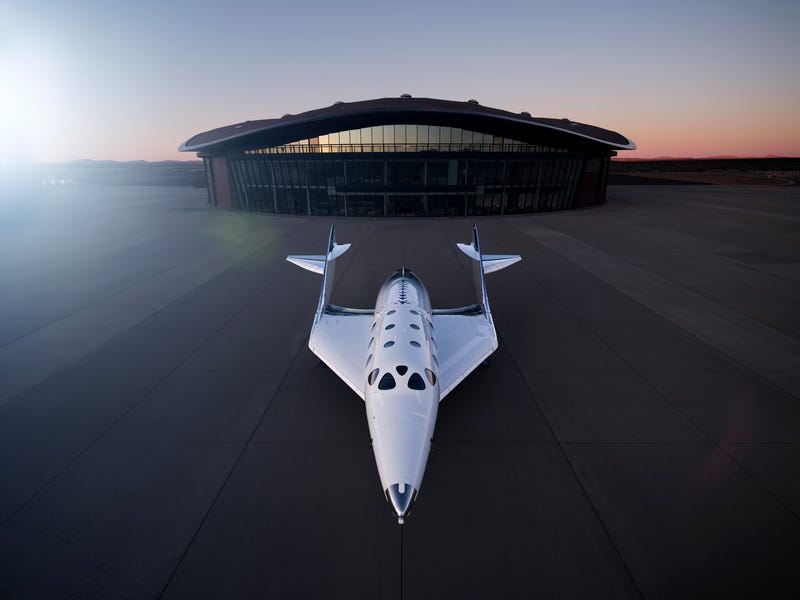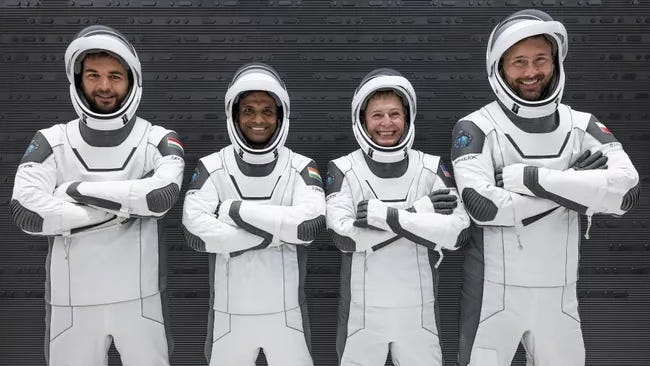There’s a podcast that’s going to drop tomorrow morning where Tiffany Rutkowski comes in to do a show after a six-month hiatus. She didn’t have a guest, so I just stepped in and talked a LOT more than I intended to.
But, one of the things I mentioned was the Karman Line, and I wanted to explain what that is.
The Karman line is conventionally defined as the edge of space, located at an altitude of 100 kilometers (about 62 miles or 330,000 feet) above mean sea level. This boundary is not a rigid physical barrier but a conceptual demarcation where the atmosphere becomes too thin for conventional aircraft to generate aerodynamic lift, requiring vehicles to rely on orbital velocity to stay aloft.
It's recognized by the Fédération Aéronautique Internationale (FAI), the international body responsible for aeronautical and astronautical records, primarily to distinguish between aviation and space activities for legal and regulatory purposes.
How Was the Karman Line Established?
The concept traces back to Hungarian-American physicist and engineer Theodore von Karman in the mid-20th century. In the 1950s, von Karman calculated a theoretical altitude where aerodynamic flight becomes impractical due to the rarity of air molecules—around 83.8 kilometers (52.1 miles)—marking the transition to centrifugal force and orbital mechanics.
He proposed this as a potential jurisdictional boundary: below it, airspace would belong to individual countries, while above it, space would be free for all.
The term "Karman line" was popularized in a 1959 paper by space law expert Andrew G. Haley, building on von Karman's 1956 aerothermal limit studies. By the 1960s, the FAI formalized the boundary at a rounded 100 kilometers for simplicity, though von Karman's original figure was lower. This definition has since gained wide acceptance, but it's not without controversy.
Alternative boundaries exist, such as the U.S. military and NASA's 80-kilometer (50-mile) threshold, based on historical precedents like awarding astronaut wings to X-15 pilots in the 1960s who flew between 90 and 108 kilometers.
Astrophysicists like Jonathan McDowell have argued for 80 kilometers as a more scientifically accurate line, citing factors like meteor disintegration and the perigee of orbiting objects. The U.S. government avoids a fixed regulatory definition, noting that no significant legal issues have arisen from the ambiguity.
How Companies Approach the Karman Line and Astronaut Designation
Commercial space companies have leveraged these varying definitions to market their flights, often awarding "astronaut" status to passengers who cross their chosen thresholds. This became particularly evident in the 2021 rivalry between Jeff Bezos' Blue Origin and Richard Branson's Virgin Galactic.

Blue Origin's New Shepard rocket consistently surpasses the 100-kilometer Karman line—reaching altitudes like 65 miles (about 105 kilometers) in recent missions—aligning with the international FAI standard recognized by 96% of the world's population. The company emphasizes this as the true edge of space, criticizing competitors for falling short and providing a "very different experience."
Blue Origin awards its astronaut wings to passengers, as seen in the April 14, 2025, all-female crew flight featuring celebrities Katy Perry and Gayle King, who reached 65 miles and were hailed as astronauts by the company.

In contrast, Virgin Galactic's SpaceShipTwo typically reaches about 80-90 kilometers, meeting the U.S. standard but not always the Karman line. The company refers to this as "above the astronaut line" and has flown private passengers, whom it calls astronauts, positioning itself as the pioneer in commercial space tourism.

Virgin Galactic also issues its wings, and the FAA lists such flights on its Commercial Human Space Flight Recognition website for those exceeding 50 miles, though it stopped formally designating astronauts in 2021 to avoid implying endorsement.

SpaceX, under Elon Musk, takes a different tack with orbital missions like those on the Crew Dragon, which far exceed the Karman line by reaching hundreds of kilometers. The company awarded astronaut status to its Inspiration4 civilian crew in 2021 and subsequent missions, aligning with NASA definitions but emphasizing orbital achievement over suborbital hops.
Organizations like the Astronauts Memorial Foundation have evolved to include commercial astronauts, adding names from private flights as of 2019 and highlighting them in 2025 ceremonies.
Experts like McDowell note the altitude difference is "somewhat arbitrary," with experiential similarities between 80 and 100 kilometers. However, as space tourism grows—with Blue Origin's 2025 flights underscoring the trend—the lack of a universal definition continues to fuel discussions on what truly makes someone an astronaut.
For me, I figure anyone who goes up in one of these vehicles, whether they’ve been chosen, volunteered, or paid their way, deserves some reverence because as much as everyone tries to mitigate the risk, it’s a lot more than just a trip into the office.
So, when you listen to the podcast, you’ll have more insight than most, because you’re subscribed to my Substack list.





